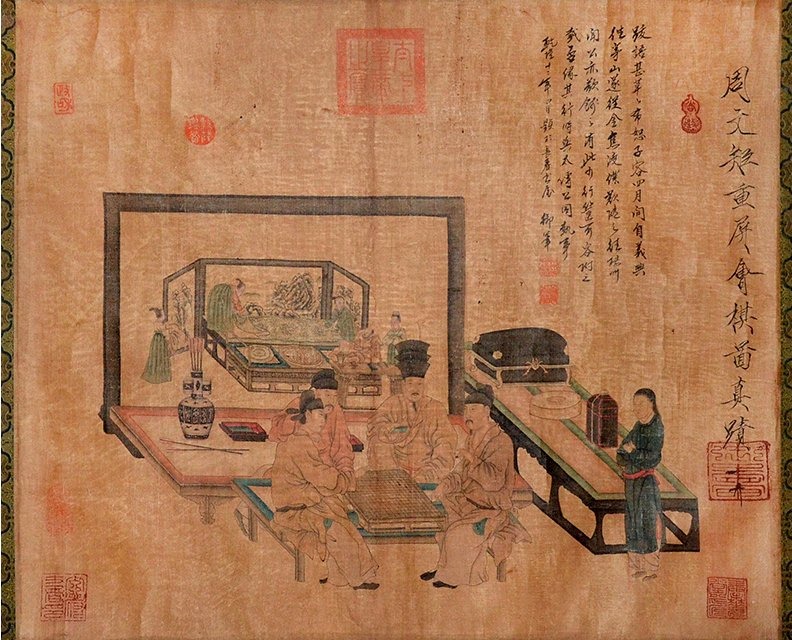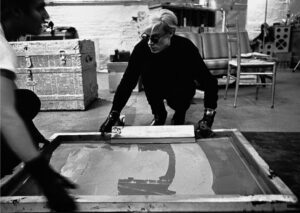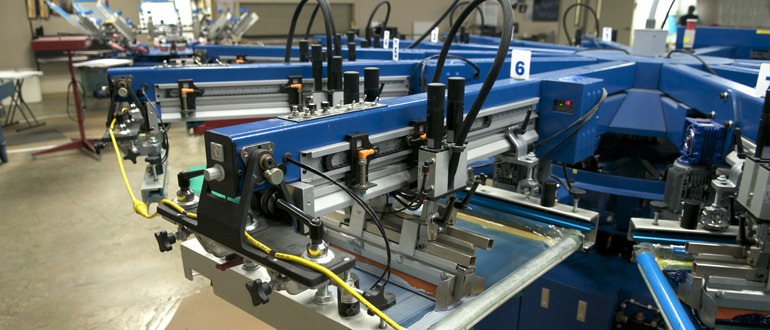The browser you are using is not supported. Please consider using a modern browser.

A Brief History of Screen Printing
A Brief History of Screen Printing
In the realm of visual arts, few techniques have left as profound an impact as screen printing. Also known as silk screen printing or serigraphy, this artistic process has transformed the way we create intricate designs. These designs can be applied to various surfaces, from fabrics to paper and even glass. Let’s uncover the history of screen printing, tracing its origins from ancient civilizations to its modern-day application in art, fashion, and commercial printing.

The Ancient Beginnings
Screen printing’s roots can be traced back to ancient civilizations, where stencils and basic printing methods were used to transfer designs onto fabrics and surfaces. In China, around the Song Dynasty (960-1279 AD), stencils made from human hair, tied together to form a mesh, were used to create intricate designs on fabrics and paper. Similarly, in Japan, the art of Katazome involved using paper stencils to transfer designs onto textiles using a resist paste.
The Innovation of Silk Screens
It wasn’t until the early 20th century that screen printing as we know it today began to take shape. In the early 1900s, artists and craftsmen in Europe, particularly in England and France, began experimenting with silk screens. The fine mesh of silk allowed for more intricate designs and finer details to be transferred onto surfaces. The use of silk led to the coining of the term “silk screen printing.”
Rise in Popularity and Industrial Applications
The screen printing technique gained significant popularity during World War II. In the United States, it was utilized for producing flags, banners, and other military materials. The simplicity of the process, coupled with the ability to reproduce designs quickly, caught the attention of artists, commercial printers, and advertisers alike.

Andy Warhol and the Artistic Renaissance
The 1960s marked a turning point for screen printing as an art form. Pop artist Andy Warhol embraced the technique. He used it to create iconic works that blurred the lines between mass production and fine art. Warhol’s colorful and repetitive prints, often featuring celebrities and consumer products, highlighted the potential of screen printing in making art accessible to a wider audience.
Commercial and Cultural Impact
Throughout the latter half of the 20th century, screen printing continued to evolve as a commercial and artistic tool. It became integral to the production of posters, T-shirts, signage, and packaging. The punk and DIY movements of the 1970s and 1980s embraced screen printing as a means of self-expression and resistance, fostering a unique aesthetic that still resonates today.

Contemporary Innovations
The digital age brought new dimensions to screen printing. Advancements in technology allowed for more precise and automated processes. Screen mesh materials diversified, offering a range of options beyond silk, including polyester and nylon. Water-based and eco-friendly inks gained popularity, addressing environmental concerns associated with traditional solvent-based inks.
Conclusion
From its humble beginnings in ancient civilizations to its role as a dynamic artistic and commercial tool in the modern era, the history of screen printing is a testament to human creativity and innovation. As we celebrate the journey this technique has taken, we recognize its lasting impact on industries ranging from art and fashion to advertising and beyond. Whether it’s a Warhol masterpiece or a custom-designed T-shirt, screen printing’s legacy continues to weave its colorful thread through the fabric of our visual culture.
Social Media
Check us out on Instagram click here. Compare our work with the competition!
Like us on Facebook click here
Check in on LinkedIn click here